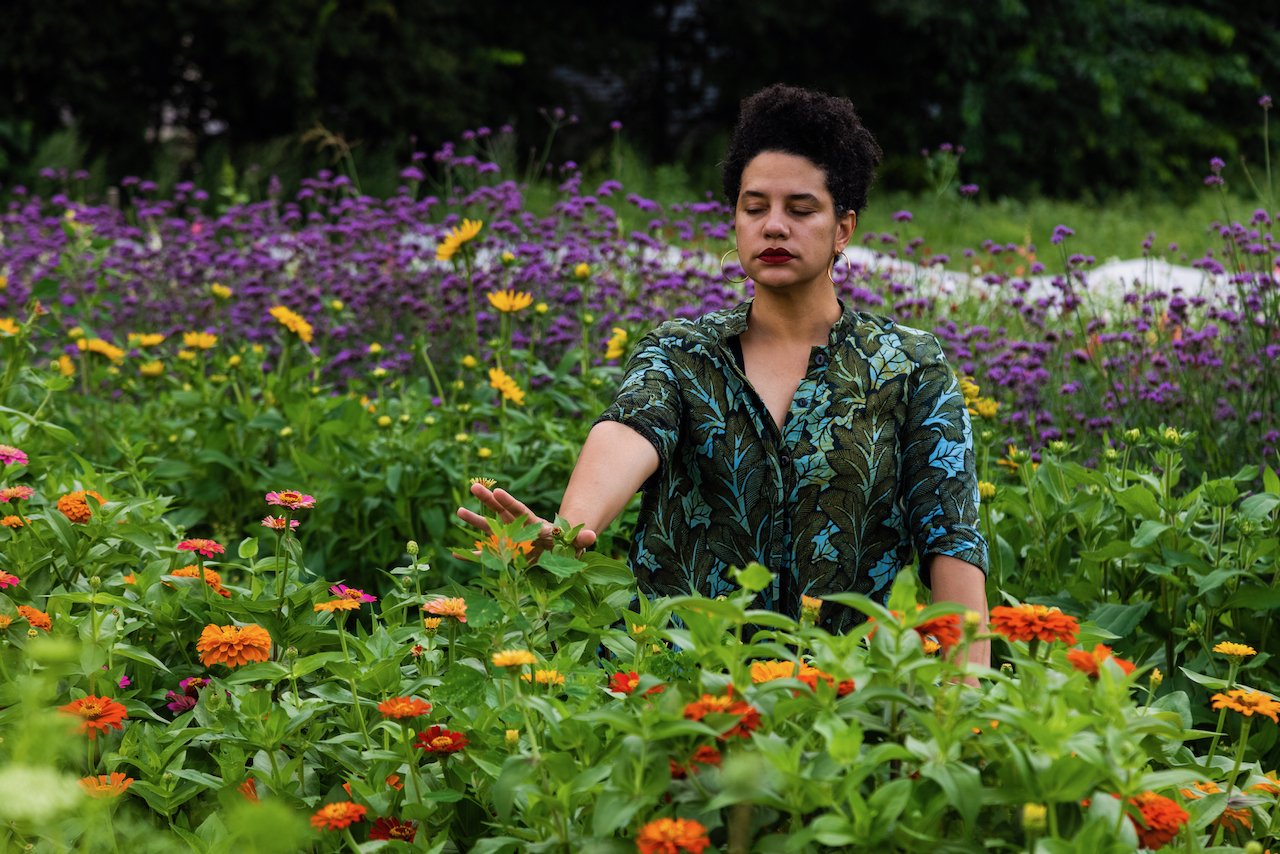
Who I am.
Jessica Roseman (she/her) is a choreographer, interdisciplinary artist, and researcher exploring movement as a portal to memory, belonging, and embodied well-being. Her work is rooted in the lived experiences of mothering, loss, and aging. Through solo performance and participatory practices, she brings forward unspoken stories of care, identity, and healing. She creates opportunities for people to sense, feel, and move in ways that support personal and collective change.
She founded Nourish, an award-winning somatic and public art project that offers restorative tools for well-being. Nourish invites people to listen deeply to their bodies and to ground themselves in relationship and place. Her 2024 residency at MASS MoCA supported the development of an immersive Nourish installation that bridged movement and visual art, performance and personal reflection.
As a PhD student in Interdisciplinary Design and Media at Northeastern University, Jessica researches how body-centered practices can generate agency through the nervous system. Drawing from the Feldenkrais® and GYROTONIC® Methods and her background as a licensed massage therapist, she studies how design can support access, wellness, and performance across public and artistic spaces.
Jessica performs, teaches, and lectures nationally. She is a New England States Touring Artist, Co-Curator for The Dance Complex’s annual programming, and mentor for both the Asian American Ballet Project and NACHMO Boston. Her recent residencies include Lexington Community Farm, Arrow Street Arts, Subcircle, Bearnstow, and the Atlantic Center for the Arts. She has collaborated with organizations including Now + There, DeCordova Sculpture Park and Museum, ICA Boston, Global Arts Live, and Miami Light Project.
Her writing on Nourish will be published in two books in 2025. Jessica lives with her twin teens on unceded Massachusett and Pawtucket land, in what is now called Lexington, Massachusetts.
What I do.
I create movement-based experiences that help people feel more at ease in their bodies. Sometimes it’s a solo performance. Sometimes it’s a public workshop, a sensory installation, or a quiet set of gestures shared on a sidewalk. I design these moments to center awareness, choice, and presence.
I work with movement, somatics, and participatory design to support agency, well-being, and belonging. My projects meet people where they are. On stages, in parks and galleries, in bed or online, I offer ways to notice what feels familiar, what feels uncomfortable, and respond with attention.
I founded Nourish to share tools for restoration and self-inquiry with people who have been excluded from dominant wellness spaces. I create practices that help each person sense themselves, trust their voice, and move with honesty.
I am expanding this work into health, educational, civic, and community spaces. I see movement as a tool for cultural change, shaping how we relate to ourselves and each other, how we design environments, and how we participate in shared systems.
I also write and give talks about movement, design, and embodiment. I share stories and strategies that invite people to reflect on how we live in our bodies, and how we shape the world through attention and action.
My research asks:
How can movement teach us belonging?
How can it support agency in daily life?
How might it awaken compassion, both inward and outward?
How does movement generate empowerment through experience?
How can we use movement to build genuine connection with self, others, and place?
What becomes possible when we stop striving and begin sensing?
If any of this resonates, I’d love to connect. Whether you're curious, skeptical, or somewhere in between, I welcome conversation. Let’s move toward something together.
